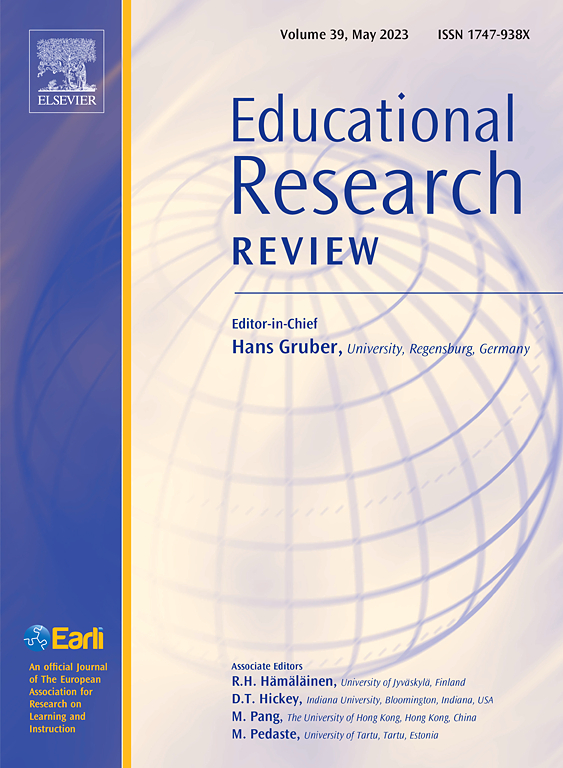Success of EMI in higher education and its key components: A meta-analytic structural equation modelling approach
IF 10.6
1区 教育学
Q1 EDUCATION & EDUCATIONAL RESEARCH
引用次数: 0
Abstract
The increasing global demand for English Medium Instruction (EMI) in higher education (HE) highlights the need for empirical research to contribute to its success and suggest ways of mitigating the diverse challenges faced by students and institutions. Identifying the key factors that contribute to successful EMI is critical for improving both content and language learning outcomes for students. In the wake of the recent surge in EMI research, more research synthesis is needed to understand how these factors interact to influence EMI success rather than focusing solely on their isolated, bivariate relationships. To address this gap, we conducted meta-analytic structural equation modelling (MASEM) to examine the structural relationships among the key factors affecting the success of EMI. Synthesising data from 50 studies (N = 15,032), our analysis demonstrates that learners’ engagement and English proficiency are pivotal for both content and language learning, with English proficiency being more important for language learning outcomes, although itself considerably also influenced by learners’ anxiety and motivation. Additionally, the moderator analysis shows that learner engagement plays a more significant role in partial EMI contexts, leading to our recommendation for differentiated institutional support in full and partial EMI settings. However, owing to the limited availability of correlation coefficients, some key factors and moderators were excluded, prompting the need for further empirical research to explore these relationships in greater depth.
高等教育中EMI的成功及其关键组成部分:一种元分析结构方程建模方法
全球对高等教育(HE)中英语媒介教学(EMI)的需求日益增长,这凸显了对实证研究的需求,以促进其成功,并提出减轻学生和机构面临的各种挑战的方法。确定有助于成功的EMI的关键因素对于提高学生的内容和语言学习成果至关重要。在最近EMI研究激增之后,需要更多的综合研究来了解这些因素如何相互作用以影响EMI的成功,而不是仅仅关注它们孤立的双变量关系。为了解决这一差距,我们进行了元分析结构方程模型(MASEM)来研究影响EMI成功的关键因素之间的结构关系。综合50项研究(N = 15032)的数据,我们的分析表明,学习者的参与度和英语水平对内容和语言学习都至关重要,英语水平对语言学习结果更为重要,尽管英语水平本身也受到学习者焦虑和动机的很大影响。此外,调节分析表明,学习者参与在部分EMI环境中发挥更重要的作用,因此我们建议在完全和部分EMI环境中提供不同的机构支持。然而,由于相关系数的可用性有限,一些关键因素和调节因子被排除在外,需要进一步的实证研究来更深入地探讨这些关系。
本文章由计算机程序翻译,如有差异,请以英文原文为准。
求助全文
约1分钟内获得全文
求助全文
来源期刊

Educational Research Review
EDUCATION & EDUCATIONAL RESEARCH-
CiteScore
19.40
自引率
0.90%
发文量
53
审稿时长
57 days
期刊介绍:
Educational Research Review is an international journal catering to researchers and diverse agencies keen on reviewing studies and theoretical papers in education at any level. The journal welcomes high-quality articles that address educational research problems through a review approach, encompassing thematic or methodological reviews and meta-analyses. With an inclusive scope, the journal does not limit itself to any specific age range and invites articles across various settings where learning and education take place, such as schools, corporate training, and both formal and informal educational environments.
 求助内容:
求助内容: 应助结果提醒方式:
应助结果提醒方式:


